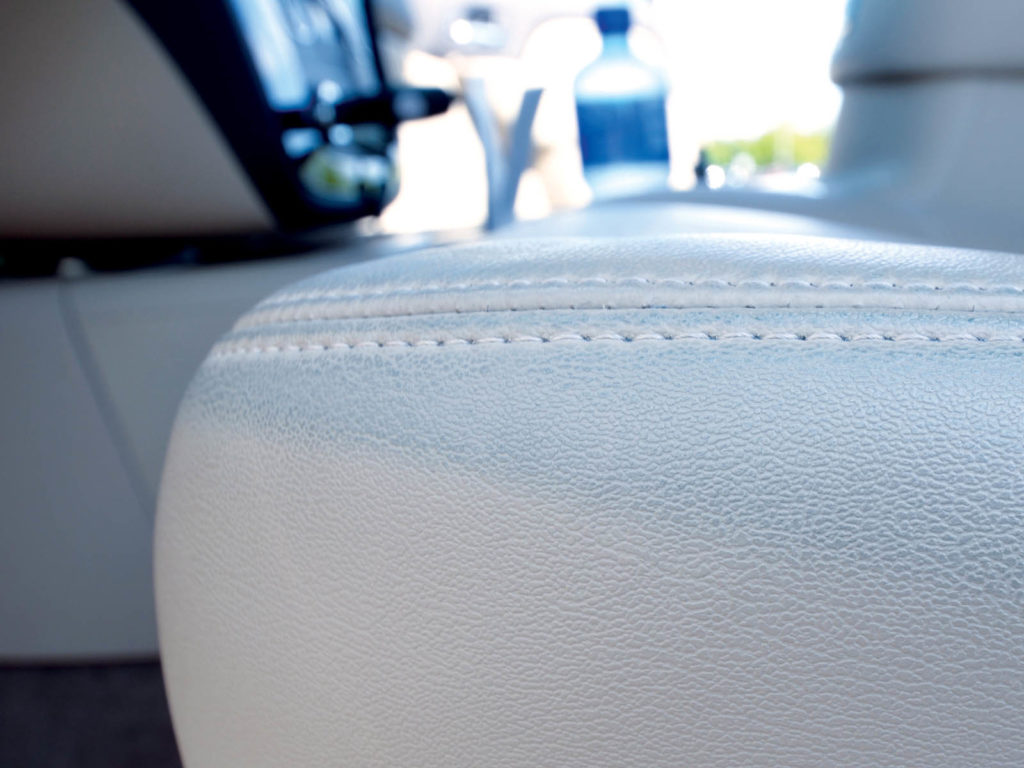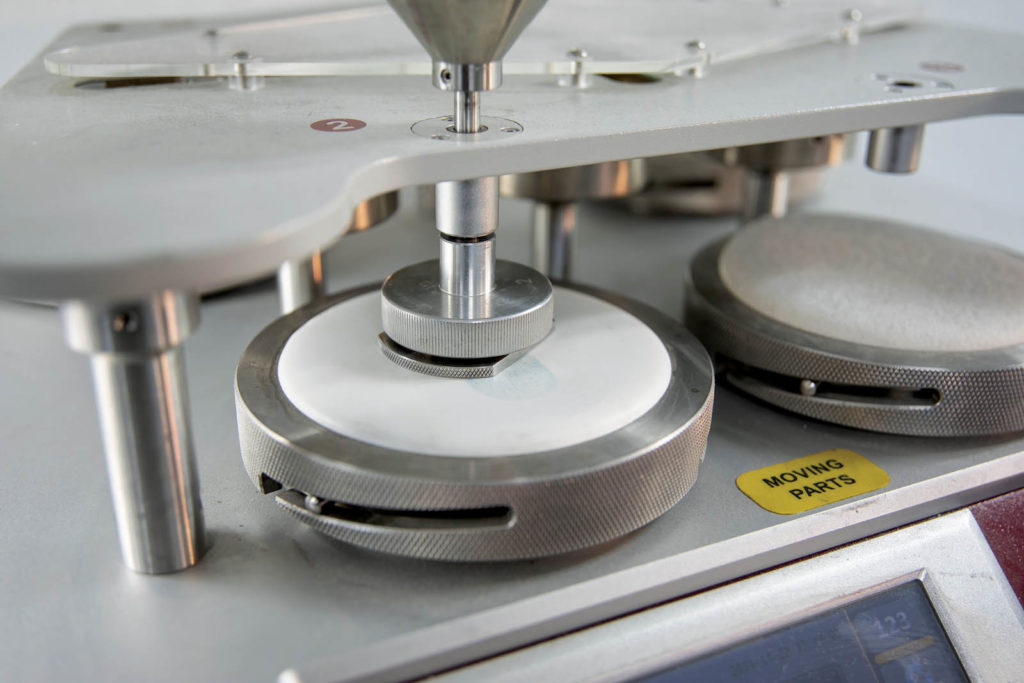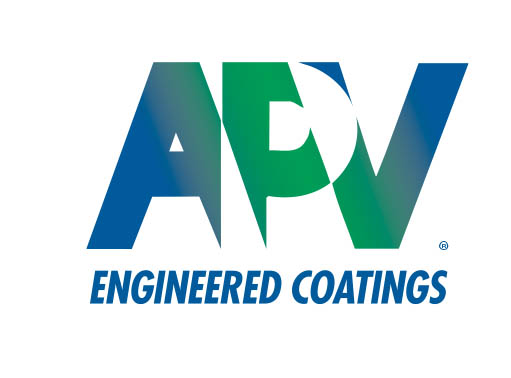
Blue jeans are one of the most common garments in the world, and the indigo dye they are fabricated with is one of the most unforgiving stains to mar surfaces like public, mass transit and automotive seating. To protect fabrics used in high-traffic applications, manufacturers of upholstery and flexible vinyl must turn to protective lacquers. But how can they know how well the lacquer will perform against these tough stains?
Stain performance testing
Requirements for stain resistance vary by market and end use. At APV Engineered Coatings, we customize our VYNGUARD® lacquer systems to provide the specific performance properties customers desire for each application.
To understand how custom-formulated VYNGUARD® lacquer systems will perform throughout the lifecycle of each customer’s product, we test coated fabric samples against the key stains the finished product will undergo in use, including foods like coffee, mustard and ketchup, as well as chemical stains from cleaners, permanent marker and blue jean dye.
While some OEMs, especially those in the automotive industry, have developed their own test methods to measure the performance of lacquers, stain resistance also can be tested in a variety of industry-standard ways. Some tests, such as ASTM D4966-98 (see below) use dry denim. Others, such as AATCC TM8 Colorfastness to Crocking, use wet denim to evaluate the color change on the fabric, which may be of particular interest to marine textile manufacturers.

Martindale Abrasion Test
One of the key industry standard tests for evaluating the ability of a lacquer to prevent the ingress of denim stains to fabric is the ASTM D4966-98 Martindale Abrasion Test.
In this test, a coating is applied to a light-colored fabric, which is then mounted to a Martindale Abrasion Tester. The fabric is subjected to rubbing in a figure eight motion until failure or after reaching the manufacturer’s specified number of rubs, after which, the substrate is evaluated (sometimes against the AATCC grey scale) to determine the Delta E (or color change) of the coating. Good abrasion resistance is essential to achieving good stain resistance. Each manufacturer has their own variance to this test and differs in their interpretation of an acceptable degree of blue dye transfer.
VYNGUARD® protective lacquers have proven resistance to abrasion and tough stains like blue jean dye. The fully customizable line of coatings includes VYNGARD® PVDF coatings with a fluorine chemistry that provides a low surface energy for easy cleanability and weather resistance that makes them ideal for marine and high-humidity applications. VYNGUARD® Anti-Graffiti coatings – ideal for high-temperature curing – feature a high crosslink density for excellent stain and chemical resistance while maintaining the substrate flexibility.

Evan Bunch is a Chemist with APV Engineered Coatings where his responsibilities include product development, optimization and quality control. He has been with the company since 2016 and has seven years of coatings industry experience. Bunch holds a B.S. in biology (with a minor in chemistry) and is a member of the American Chemical Society.

 TEXTILES.ORG
TEXTILES.ORG


